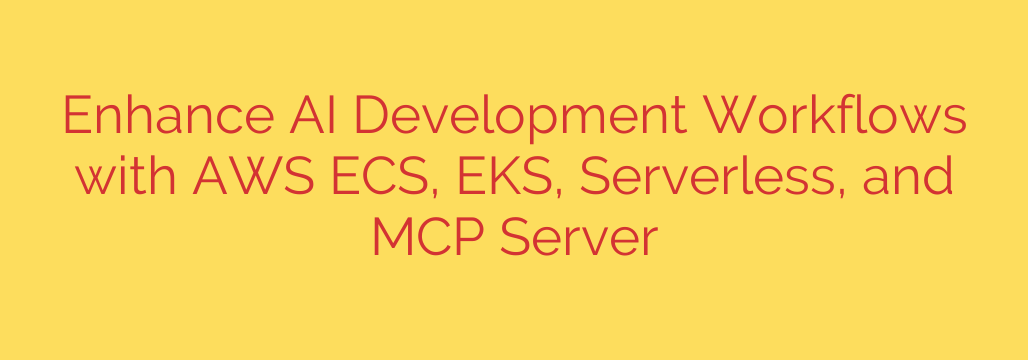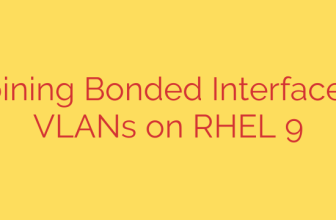
Navigating the complex landscape of Artificial Intelligence (AI) and Machine Learning (ML) development requires a robust, flexible, and scalable infrastructure. Traditional approaches often face hurdles related to resource management, deployment complexity, and achieving consistent performance. Leveraging cloud services, particularly those offered by AWS, provides a powerful foundation to overcome these challenges, enabling faster iteration and more efficient AI pipelines.
A key strategy for enhancing AI development workflows involves utilizing a combination of AWS services designed for containerization and serverless computing. Services like AWS Elastic Container Service (ECS) and AWS Elastic Kubernetes Service (EKS) are fundamental for running machine learning workloads within containers, offering portability and consistency across different environments.
AWS ECS provides a simpler way to manage containerized applications. It’s well-suited for running batch training jobs, inference tasks, and managing model serving endpoints. With AWS Fargate, its serverless option, developers can run containers without provisioning or managing underlying servers, significantly reducing operational overhead and simplifying scalability. This is ideal for stateless or easily parallelizable AI tasks.
For more complex or distributed AI applications, AWS EKS offers the power of Kubernetes orchestration. EKS is excellent for managing intricate machine learning workflows, handling large-scale model training across multiple nodes, and building sophisticated MLOps pipelines. Its features like advanced scheduling, self-healing capabilities, and extensive ecosystem make it suitable for demanding AI workloads requiring fine-grained control and resource management. Kubernetes on EKS is often the choice for organizations standardizing their container strategy or operating hybrid/multi-cloud environments.
Complementing container-based approaches are AWS serverless services. AWS Lambda, a premier serverless function service, is invaluable for event-driven tasks within AI workflows, such as triggering data processing upon arrival, performing lightweight inference on demand, or handling API requests for model predictions. Its pay-per-execution model offers significant cost optimization for intermittent or variable workloads. Furthermore, services like AWS SageMaker provide fully managed options for the entire ML lifecycle, seamlessly integrating with other AWS services and supporting various training and deployment options, including serverless endpoints.
A comprehensive AI infrastructure often integrates these components. For instance, data processing might be orchestrated by Lambda functions or ECS tasks, while model training runs on EKS or SageMaker. The trained models can then be deployed for inference using ECS, EKS, or SageMaker endpoints, potentially fronted by API Gateway and scaled dynamically. In advanced setups, dedicated components like a Master Control Program (MCP) Server, if part of the specific workflow architecture, could manage job scheduling, data pipelines, or specific compute clusters, coordinating tasks across the AWS services to ensure efficient execution of AI pipelines. This integrated approach builds robust MLOps practices, enabling continuous integration and delivery of AI models.
Leveraging AWS ECS, EKS, Serverless options, and potentially specific components like an MCP Server within your AI development workflow accelerates innovation. This combination provides the necessary scalability, efficiency, and flexibility required for modern machine learning. By adopting these cloud technologies, teams can focus less on infrastructure management and more on building, training, and deploying impactful AI models, ultimately speeding up time to production and realizing the full potential of their AI initiatives.
Source: https://aws.amazon.com/blogs/aws/enhance-ai-assisted-development-with-amazon-ecs-amazon-eks-and-aws-serverless-mcp-server/








